 [ORIGINALLY PUBLISHED ON 19TH APRIL 2009 BY RED C MAGAZINE]
[ORIGINALLY PUBLISHED ON 19TH APRIL 2009 BY RED C MAGAZINE]
Really, what’s the point of celebrity endorsement? Does anyone actually care what kind of natural yoghurt tickles the tastebuds of a vacuous reality star, or which department store has flip-flops to fit a has-been pop singer? Perhaps, or perhaps not… it really depends who the celebrity is, and whether they appeal to the product’s target market. I, for one, am happy to believe that Peter Kay really does enjoy a cheeky pint of John Smith’s, and that Stephen Fry genuinely relishes “the soothing taste of Twinings”. And I’m also thoroughly convinced that Kerry Katona does – or did – her big shop at Iceland.
Good celebrity endorsements rely on a careful marriage between product and ‘star’. If the collaboration works then both brand and celebrity could reap the rewards, but if the two are utterly mismatched then the association could have a severely damaging effect on product sales, profits and worse – reputations.
The benefits of celebrity endorsement
Celebrity endorsement is no new phenomenon. During the 18th Century, Pope Leo XIII gleefully endorsed the cocaine-laced patent medicine Mariani Wine, as did Queen Victoria – who also offered a royal testimonial to just about every snake oil merchant going. All throughout the 20th century companies paid people in the public eye to approve their products, but the quantity and value of celebrity endorsements has skyrocketed in recent years. So just how does a company, or their appointed marketing agency, decide which star best represents the very ‘soul’ of their brand?
Well, it’s all about believability. A good endorsement should be natural; the partnership between person and product seamless, credible, likely. Saying this, sometimes a ‘likely’ celebrity isn’t the ideal – KFC won’t be courting Johnny Vegas for a testimonial, for example, and you won’t find Amy Winehouse fronting a campaign for Lambrini. Realism is important, but the brand still has to be seen in a good light, appeal to its target audience and… sell.
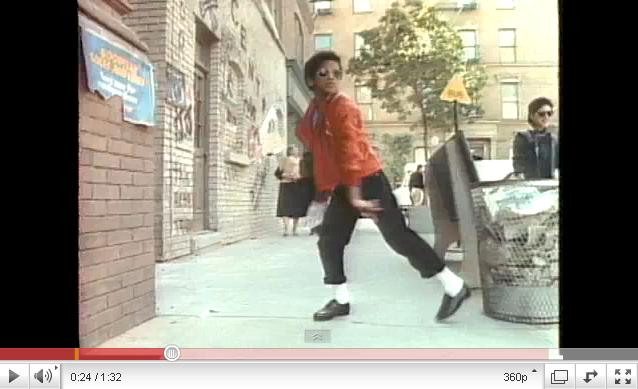 Michael Jackson endorsed Pepsi from 1984 until 1993
Michael Jackson endorsed Pepsi from 1984 until 1993
Aligning your product with a celebrity gives it a human face, voice and personality. A particular person’s attributes (sex appeal, athleticism, charm…) can rub off on the brand, allowing an inanimate object to take on a life of its own. Plus any positive exposure for the celeb means associated exposure for the brand: Jamie Oliver’s healthy school dinners campaign led to a significant sales increase for Sainsbury’s, even though they had bugger all to do with it. The right star brings strong, relevant characteristics and associations that engage consumers and affect buying behaviour. In short, using the right celebrity in an appropriate brand campaign can instantly transform them into the perfect salesperson.
Pitfall 1: Wrong celebrity, wrong campaign
Let’s begin with how not to do it, with an example of a product and celebrity that are utterly at odds. A recent high-profile mismatch that has been ripped apart by the broadsheets is the bizarre pairing of Swiftcover with professional anarchist Iggy Pop. Using the godfather of punk rock to flog online car insurance has left a sour taste in the mouths of many consumers, with critics claiming this ad proves punk really is dead.
In the insurance campaign Iggy Pop sprints around the place like an over-sugared toddler, claiming that he’s not selling car insurance – an accurate prediction of the campaign’s fate – but selling time instead. In reality, he’s produced little more than ridicule and vitriol, as punk aficionados have turned to music message boards and blogs to vent their anger about the iconic rebel ‘selling out’. Journalist Andrew Mueller argues that it’s natural for a fan to react badly upon seeing their favourite artist in an advert, because they feel as though their associated memories and experiences have been tarnished. “We love songs because they remind us of someone or something”, he says, “and it’s annoying when we find ourselves having no choice but to associate them with bathroom freshener.”
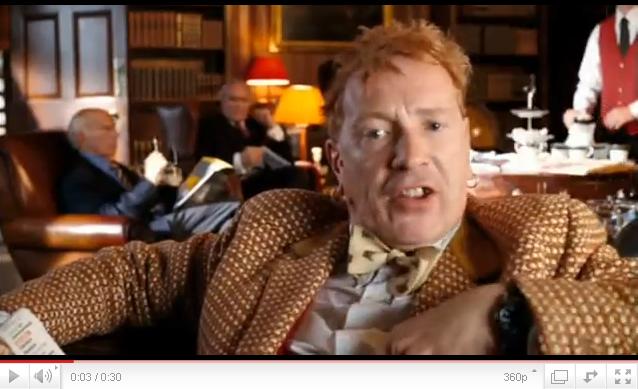 John Lydon’s Country Life advert has upped sales by 83%
John Lydon’s Country Life advert has upped sales by 83%
So then, how come the Country Life campaign starring John Lydon (aka Johnny Rotten) has been so successful? Well, the main reason for its success is that it understood the celebrity’s public persona, referencing and subverting it in a faintly amusing fashion. Due to a stint in ITV’s ‘I’m a Celebrity, Get Me Out of Here!’, the Rotten faithful and general public had already been exposed to (and had approved of) the more commercial, less anarchic and surprisingly patriotic middle-aged Sex Pistol… so his appearance in an advert was perhaps less of a shock than Iggy Pop’s was. Country Life also took great care to incorporate and undermine every possible public perception of who Lydon was; he gallivants around the countryside in a tweed jacket to a punk soundtrack, pondering whether his love of the butter is really about Great Britain or just about “Great Butter”.
Pitfall 2: Right celebrity, wrong campaign
The main reason the Twining ads worked so well was because they presented Stephen Fry in a way that was familiar to his admirers; he was equipped with his expected charm, sweetness, humour and ‘high language’, and interacted with the product in a realistic and natural way. They not only chose the right celebrity, but employed him in the right way. Unfortunately, not every celebrity endorsement manages this. Sometimes a brand can wangle the perfect celeb for its product, but the advertising campaign fails to capitalise on their endorsement by not managing to create a recognisable setting in which they can thrive.
In 2008, Gillette created a series of adverts that starred three of the world’s greatest sportsmen: Tiger Woods, Thierry Henry and Roger Federer. They are just about the perfect spokespeople for Gillette; respected and inspirational figures for the average British man; popular, stylish, handsome and, importantly, clean-shaven. However, the good casting was extraordinarily let down by a series of desperately cheesy ads, more likely to induce mass-vomiting than up meagre razor sales.
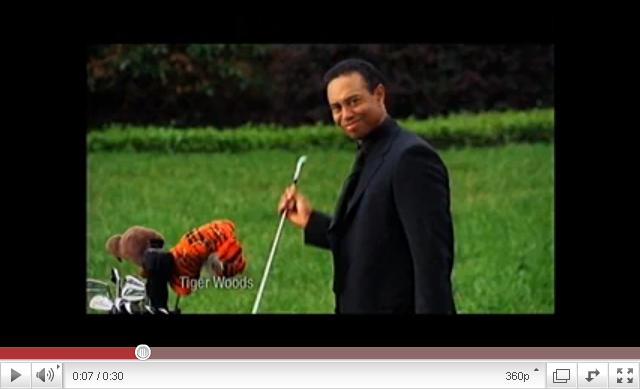 This Gillette campaign was voted the worst TV ad of 2008
This Gillette campaign was voted the worst TV ad of 2008
This appalling advert sees the trio utilising their various ball skills (that’s golf, football and tennis) to knock Gillette’s Mach 3 razor out of men’s hands as they’re poised to shave – don’t try this at home kids – and prompting them to pick up their new Fusion Power razor instead. The creative lacks any charm or wit, incorporates cheap and rubbish graphics and fails to use the stars to good effect. Instead, it seems content at just matching each celeb to the corresponding sport, relying on their presence alone to communicate the message that their Mach 3 razor, despite being ‘the best a man could get’ mere months earlier, is now embarrassingly out of date and should be instantly discarded like a burning turd. This shoddy TV ad was named worst of the year by industry magazine Campaign, with the editor (feeling particularly smug at her sporting knowhow) quipping that “the Gillette ad is an own goal, a double fault and a bunker shot rolled into one”.
Pitfall 3: Right celebrity, right campaign
Annoyingly, it’s also possible for you to get everything right but be affected by outside influences. You can work hard to match the right celebrity with your product and come up with a good campaign that plays to their reputation and appeals to your target audience, but you can’t account for that celeb’s extracurricular activities. Giving your brand a human face, voice and personality also means giving it human faults, and when your star is subjected to negative media exposure, this quickly translates as negative coverage for all their endorsed brands.
Take Fern Britton for example. As a friendly and approachable television personality she seemed the perfect celebrity tie-in for Ryvita. However, at the same time as she was fronting their ‘Bikini Fit Challenge’ adverts it was exposed by the News of the World that her impressive weight loss wasn’t (as she had often claimed) because of “healthy eating and cycling”, but rather the result of gastric band surgery. Her advert urging the general public to “lose weight with Ryvita and exercise” suddenly lost all gravitas and the brand’s credibility suffered as a result.
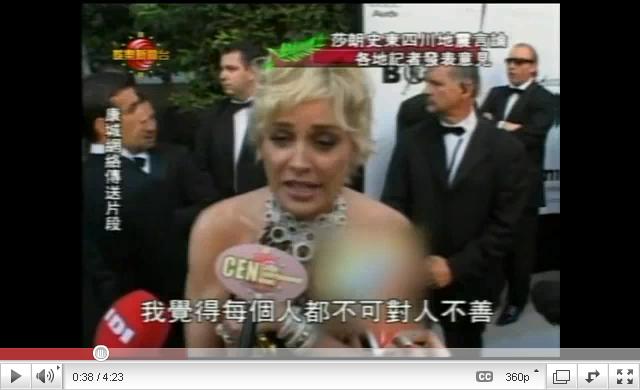 Sharon Stone claims the Sichuan earthquake was ‘karma’
Sharon Stone claims the Sichuan earthquake was ‘karma’
Similarly, when Sharon Stone claimed in an interview that the Sichuan earthquake was ‘karma’ for the way the country has treated Tibet, Christian Dior were forced to pull her ads in China. They also issued an apology and promised to support the recovery and rebuilding work. Finally, they dropped Sharon like, well, a Stone. In truth, private comments and actions have affected celebrity endorsements for years; just imagine how Wilson Sporting Goods’ sales plummeted when O.J. Simpson was arrested on a double murder charge, or how Pepsi were damaged by Michael Jackson’s kiddie-fiddling allegations.
Sometimes it isn’t even about a personal misdemeanour, but can come down to a public show of brand disloyalty. In 2000 it was revealed that Tiger Woods, despite fronting ads for Nike Tour Accuracy golf balls, used his own specially modified balls. And while appearing in ads for Sainsbury’s, Jamie Oliver admitted to only using independent suppliers for his restaurant, claiming that “for any chef, supermarkets are like a factory.” There are countless more examples, like Helena Bonham Carter admitting she didn’t wear makeup while advertising Yardley cosmetics, or Shane Warne being caught smoking while endorsing Nicorette chewing gum. It is impossible for a brand to control its celebrity endorser outside of their commercials and promotions, so gaffes and scandals have to be accepted as an associated risk of endorsement.
So is celebrity endorsement worth it?
There’s no doubt that celebrity endorsement is a risky business. There are lots of ways it can go wrong; you can choose the wrong celebrity, pick the right celeb but use them in the wrong way, or come up with a great campaign only to discover that your erstwhile placid star has flipped and knifed a puppy in the face. But there are also countless examples where celebrity endorsement has worked as an extremely effective and profitable form of marketing. It’s all about limiting the chances of disaster.
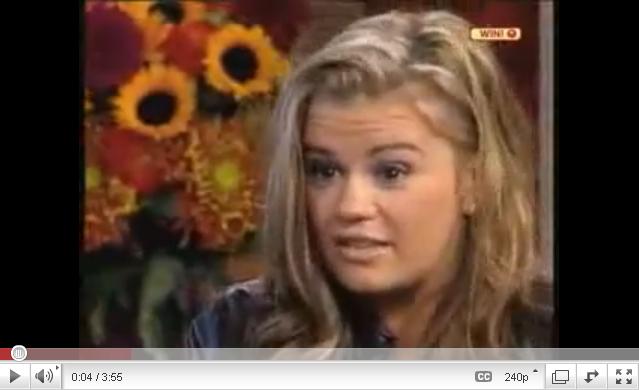 Kerry Katona was dropped by Iceland after this TV appearance
Kerry Katona was dropped by Iceland after this TV appearance
First of all: choose the right celebrity. They must appeal to your target audience and have characteristics that reflect how you wish your brand to appear. They must also be credible as users of your product, so consumers can clearly make the association between ‘that one off Emmerdale’ and ‘that thing they’re selling’. To that end, don’t use David Beckham to advertise your course on quantum physics, nor Steven Hawking to flog your football boots. If possible, find a celebrity that really does use your brand.
Also, choose a celeb that’s generally considered ‘a safe bet’. Of course, you can’t always anticipate media coverage – who could predict Fern Britton’s weight loss scandal? – but steer clear of stars with a history of negative media coverage or brand disloyalty. Finally, once you have your perfect star, make sure your campaign is up to scratch. It needs to be firmly connected to your chosen celebrity, by either adhering to or undermining their public persona – dumping a celebrity into an already fully-formed advertisement concept simply doesn’t work. Make sure the campaign plays to your star’s strengths, fits their public persona, is well-conceived, well-written and well-executed… and you just might have a winner on your hands.
It’s not an easy ask, but getting the right celebrity in the right campaign can increase product sales, profits and reputations. The road to a successful celebrity endorsement campaign may have a number of pitfalls, but carefully navigating your way to a realistic product-star relationship can do wonders for your brand.
P.S. Sometimes a big money endorsement can just land in your lap. Buxton received the most coveted celebrity endorsement of all when Barack Obama turned down the offer of a glass at the recent G20 summit in London and took numerous swigs straight from a Buxton water bottle. And best of all, the repeated display of their logo to viewers watching around the world didn’t cost Buxton a sausage. Doug Shabelman, a bloke who brokers celebrity advertising deals, estimated the value of the endorsement at around £35 million. 35 million quid! The jammy gits!
This article was first published by Red C Magazine on 19th April 2009. Here’s the original post (with comments).
For more about celebrity endorsement – and for all your marketing and copywriting needs – please get in touch.

“And I’m also thoroughly convinced that Kerry Katona does – or did – her big shop at Iceland.”
V funny and V informative too – top article. Kudos!
Cool article and keep it up.
How fluky is that from Buxton?
Great article!!! I hate celebrity endorsement!!!
I just want to say I appreciate this good article.
How lucky is that for Buxton?
Very interesting article, though a bit outdated now. What happened to Stephen Fry and Twinings in the end?
This is a really interesting article
I don’t think the Nike advert is real, it can’t be.
If you want to get social bookmarking backlinks that will help skyrocket your website search engine ranking straight to the top, check out this site http://socialbookmarksubmission.org/
Just found this when doing some research – a great article!
HA HA!!!